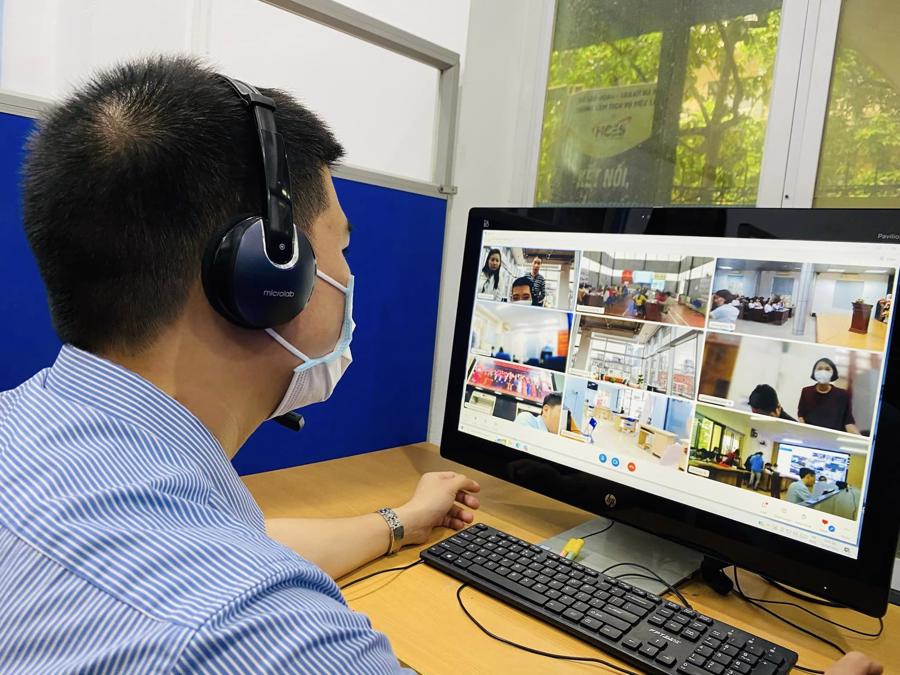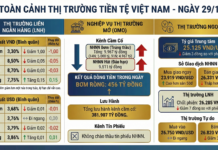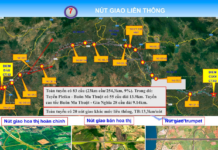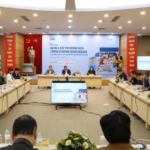“Training for Long-Term Value Creation: Retaining Talent in a Competitive Market”
In a competitive recruitment market, one of an enterprise’s primary concerns is attracting and retaining talent. To achieve this, companies have prioritized training as a key advantage.
CREATING LONG-TERM VALUE THROUGH TRAINING
Sharing the realities and challenges faced in hiring and retaining employees, Ms. Lam Thi Ngoc Ngan, HR Director of Pizza 4PS Joint Stock Company, said that due to the nature of their service industry, they primarily hire young, untrained workers.
According to Ms. Ngan, as young people are the target demographic, the company has to utilize various channels for recruitment, ranging from traditional newspapers to online job portals and social media platforms like Facebook and TikTok. They even consider employee referrals.
The company’s hiring requirements are high, while the supply falls short of demand. On average, they need to successfully recruit over 3,000 full-time employees each year. This equates to a monthly target of 300 new hires, and to achieve this, they receive a substantial number of applications.
“We invest significant effort into training our recruits from the very beginning,” said the HR Director of Pizza 4PS. “However, we face a high turnover rate, which is a challenge. Therefore, in addition to competitive salaries, we aim to create more long-term value for our employees.”
Currently, most enterprises prioritize training and development for their workforce to meet the demands of their production and business activities. This assessment was shared by Mr. Dam Trung Hieu, Deputy Head of the Labor Management Division at the Management Board of Ho Chi Minh City Export Processing and Industrial Zones Authority.
Mr. Hieu provided information on the diverse range of industries, scales, and technological levels of the businesses operating within the Export Processing and Industrial Zones in Ho Chi Minh City. Currently, there are over 250,000 employees working in these zones, with an increasing trend in the four key industries: mechanics, electronics – information technology, chemicals – plastics and rubber, and food processing.
According to Mr. Hieu, many companies have focused on training and development to prepare their employees for managerial positions such as team leaders, shift leaders, foremen, department heads, and directors. These employees are sent to the parent company abroad for short-term and long-term training to enhance their skills and gradually replace foreign experts.
Additionally, companies provide pre-employment training to instill knowledge of labor laws and cultural etiquette in the workplace. This helps employees understand their labor rights, develop a professional work attitude, and abide by the laws of Vietnam.
ALIGNING TRAINING WITH LABOR DEMAND
The Ho Chi Minh City Export Processing and Industrial Zones Authority is currently collaborating with businesses to offer training in various fields, including information technology, artificial intelligence (AI), the Internet of Things (IoT), big data, IT software solutions, network administration, cybersecurity, cloud computing, graphic design, web technology, mechanics, automotive, automation, industrial electronics, and logistics.

Along with retraining and skill enhancement for employees in industrial and export processing zones, the authority is also implementing parallel training between vocational education institutions and enterprises.
Additionally, they are piloting a linked training model between schools and businesses, covering program content, curriculum, practical training duration in enterprises, and consumption of materials. The criteria include 50% of theoretical and basic practical training at vocational education institutions and 50% of specialized practical training at enterprises. Private vocational education institutions are encouraged to adopt this model.
Mr. Pham Anh Thang, Deputy Chief of Office at the Ministry of Labor, Invalids, and Social Affairs, acknowledged that Vietnam has a workforce of 52.4 million, which is a significant advantage. However, he also pointed out that while the proportion of trained laborers is high, the number of those with qualifications and certificates remains low.
According to Mr. Thang, one reason for this is that companies provide training for their employees after recruitment, but they don’t have the function of granting degrees or certificates. Additionally, some attractive occupations, such as ride-sharing and delivery services, are not yet officially recognized.
Mr. Thang asserted that with over 1,800 vocational training institutions nationwide, there are sufficient resources to train workers for businesses. However, he emphasized the need for companies to collaborate with these institutions to develop a skilled workforce.
Mr. Truong Anh Dung, Director-General of the General Department of Vocational Education and Training (Ministry of Labor, Invalids, and Social Affairs), shared that they are advising the Ministry to submit to the Government the development of the Law on Employment (amended) with policies to promote vocational education. These policies include incentives and honors for businesses that actively engage in training activities.
Training was also emphasized by the Minister of Labor, Invalids, and Social Affairs in a recent meeting with the Employment Bureau. According to Minister Dao Ngoc Dung, it is necessary to strengthen the state management of labor and employment, closely linking labor and employment with training. Crucially, training must be aligned with supply and demand, with the market, and with the utilization of labor. This is the breakthrough that training needs to achieve to rapidly reduce the informal labor market and create satisfactory and sustainable employment.
The Future of Work: Navigating the Labor Market in the Fourth Industrial Revolution
The Fourth Industrial Revolution has ushered in a plethora of new industries and, with it, a surge in demand for highly skilled workers to facilitate this transition. Today’s society no longer solely values academic qualifications but places a premium on vocational skills and competencies that meet the needs of these emerging industries.
What Are the Circumstances Under Which an Employee Is Not Eligible for Sick Leave?
The new Social Insurance Law of 2024, which comes into effect on July 1st, 2025, outlines four specific scenarios in which employees who are social insurance participants will not be eligible to receive sickness benefits.
Danang to Implement Policies Supporting the Development of Semiconductors, Circuits, and AI
To attract experts and scientists, develop human resources, and support businesses in the semiconductor, microchip, and artificial intelligence ecosystem, the Danang Department of Information and Communications has proposed six supportive policies for the development of these fields within the city.
An Early Retirement Opportunity for Those With Extra Social Security Contributions
The Vietnam General Confederation of Labour (VGCL) has proposed an early retirement scheme for workers with excess years of social insurance contributions, suggesting that they should be able to retire early without facing pension deductions. This proposal was put forward during a workshop held to gather feedback and opinions on the social insurance law draft.
Vietnam’s semiconductor talent pool: A perspective from NVIDIA’s CEO: While some nations possess oil and rubber, Vietnam has young, world-class educated start-up founders returning to build their homeland.
Young startups brimming with energy, world-class education, global exposure, and all Vietnamese. They want to come back to Vietnam, to their homeland, because they see what we see – the opportunity in Vietnam right now,” said Jensen Huang, founder and CEO of NVIDIA Corporation, during his trip to Vietnam late last year.









































